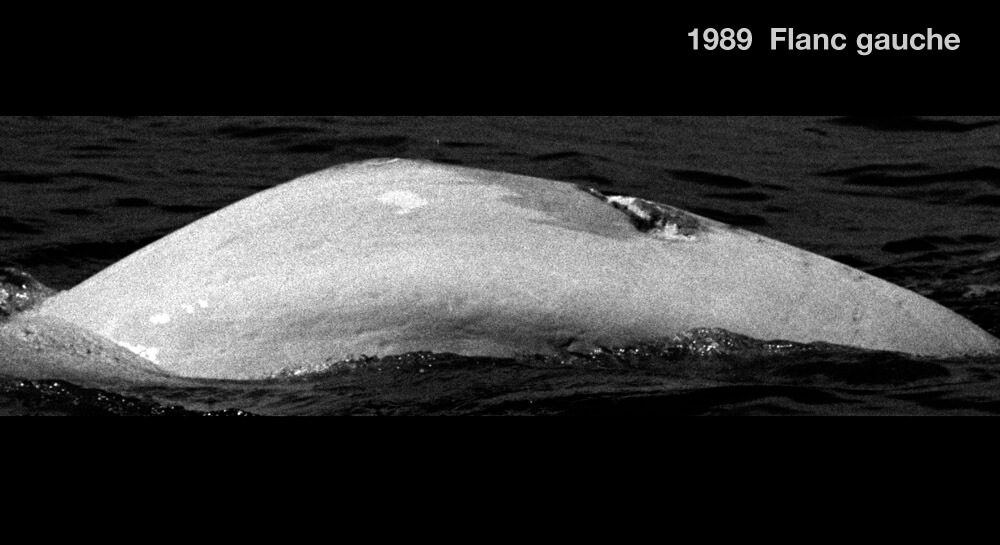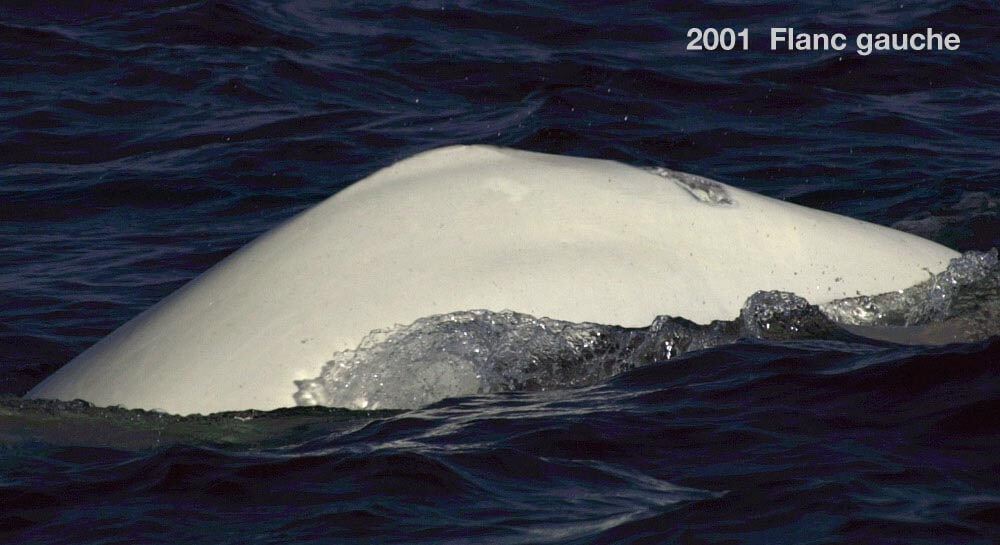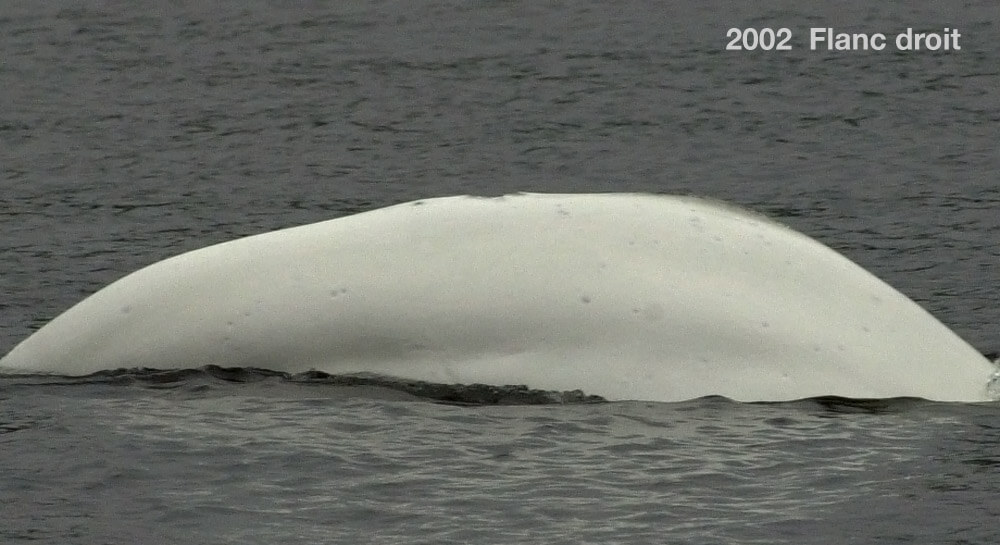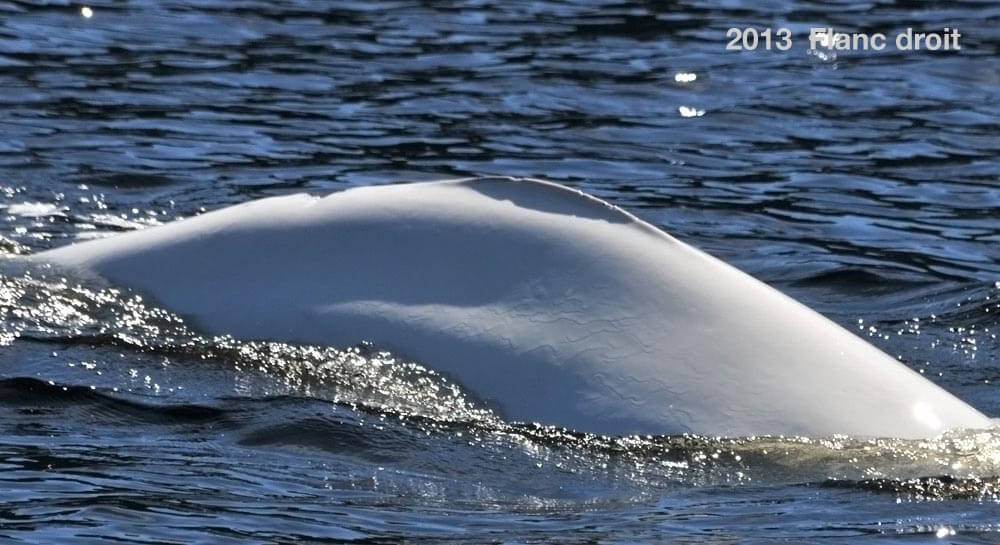Céline
Beluga


Adopted by Leslie B. Durst
-
ID number
DL0079
-
Sex
Female
-
Year of birth
Around 1973
-
Known Since
1987
Distinctive traits
Céline’s distinctive markings are numerous, but the main one is the deep scar on the left flank behind the crest, which extends down to the right flank and is surrounded by a broad, diffuse gray patch.
Life history
Our first encounter with Celine goes up to 1987, when she was slightly grey, so she was at least 12 years old.
Céline is a female. Her sex was confirmed by a biopsy, the genetic analysis of a tiny piece of skin taken from her back. She is part of the female community of the Saguenay Fjord.
On June 18, 2002, the team placed a VHF radio beacon on her right flank. Céline moves from the mouth of the Saguenay towards the Prince Shoal lighthouse, skirts ile Rouge, heads towards ile Verte and, finally, takes the direction of Cap de la Tête-au-Chien in Charlevoix. Generally, she makes shallow dives (less than 20 m) except at Cap de la Tête-au-Chien where she goes up to 40 m. The follow-up ended late in the evening… to resume the next morning. In fact, the beacon broke off in the morning at the mouth of the Saguenay River, the same sector where it had been placed 21 hours earlier. Céline is almost at the same place… only 100 m away.
Observations history in the Estuary
Years in which the animal was not observed Years in which the animal was observed
Latest news
A dream day for us on the Sainte-Marguerite Bay tower. The blue sky is speckled with a few scattered clouds. We observe a herd of around twenty adult and juvenile belugas, and even one to three calves. The number of calves is difficult to confirm, as the animals are moving vigorously. One moment, all the animals are huddled together, the next they’re widely scattered. Tails and pectoral fins flash across the surface and slap the water.
Contact with the herd allows us to recognize the stars of the St. Lawrence beluga photo-identification catalog : Athena, Miss Frontenac, Céline, Pure Laine and Blanchon were all there that day.
We observe Céline and her bleuvet in the mouth of the Saguenay fjord, near Pointe Noire. They are swimming among a herd of some forty individuals, including a newborn calf. The herd climbs quietly in a straight line towards the headwaters of the Saguenay fjord. We decide to stop the boat and fly over the area using a drone. This is a new tool that GREMM would like to use for research and conservation. Using a drone makes it easier to count and estimate the age of individuals in a herd, and increases the accuracy of the data collected.
On September 15, 2013, we came across Céline in a group of around twenty belugas made up of adults and youngsters. We’re near the Sainte-Marguerite River in the Saguenay Fjord, following the group towards Anse Saint-Étienne. Once we reach the cove, several individuals start heading in different directions, which complicates our work.
During this encounter, we try to take a biopsy from one of the individuals present. We succeed in reaching our target. Collecting a biopsy from a moving target in a boat is no mean feat. With practice, we’ve achieved a success rate of over 80%. But when we succeed, there’s joy on the boat. This is valuable data, and opportunities don’t come along that often.
Sponsor
Leslie B. Durst adopted Céline (1997).




